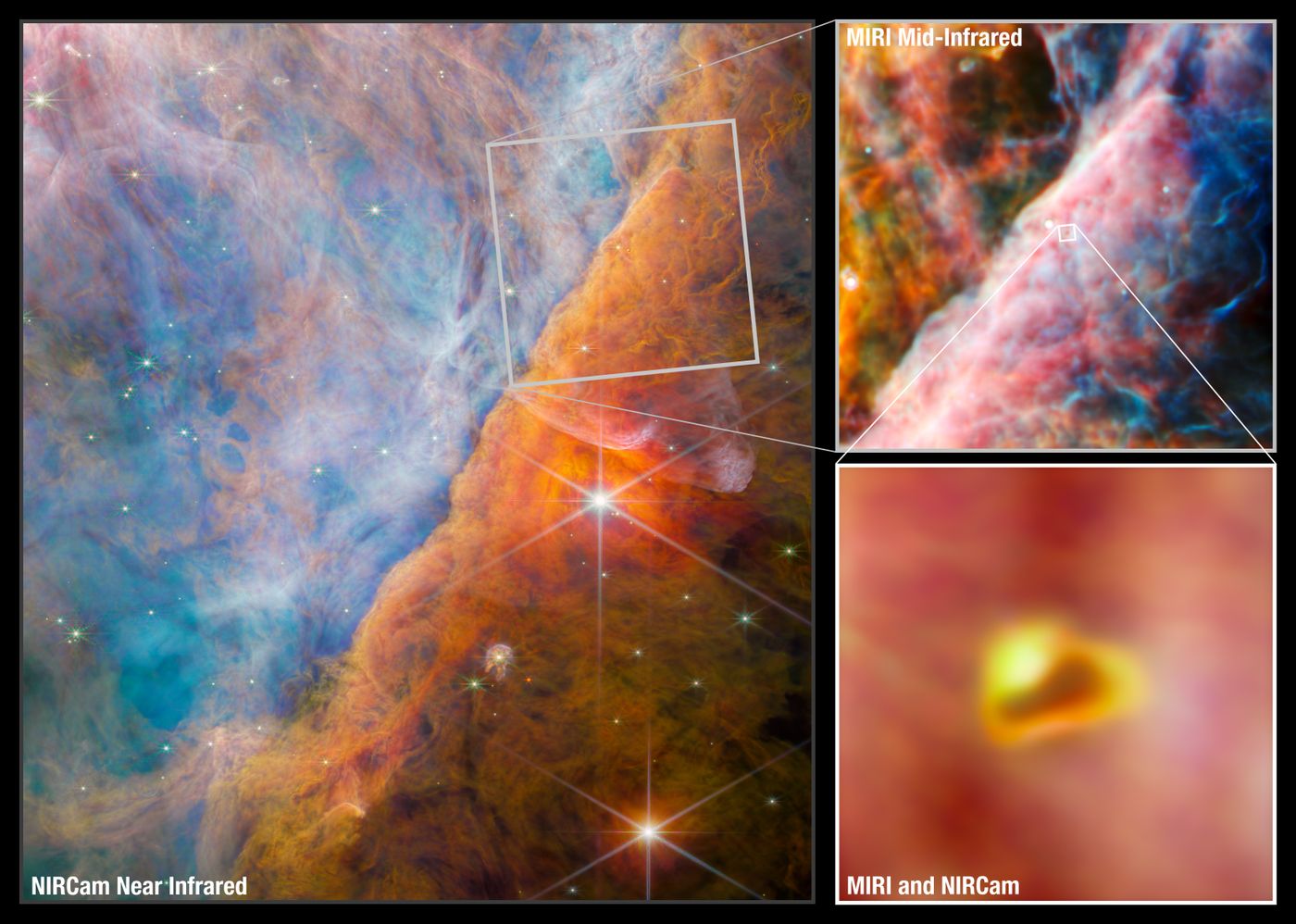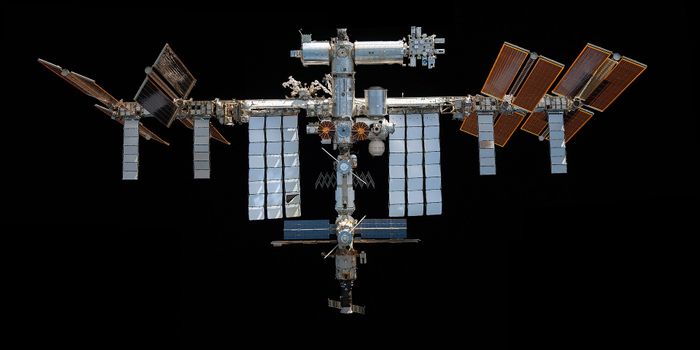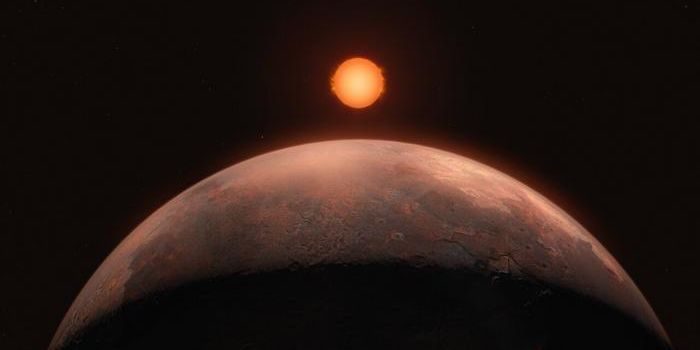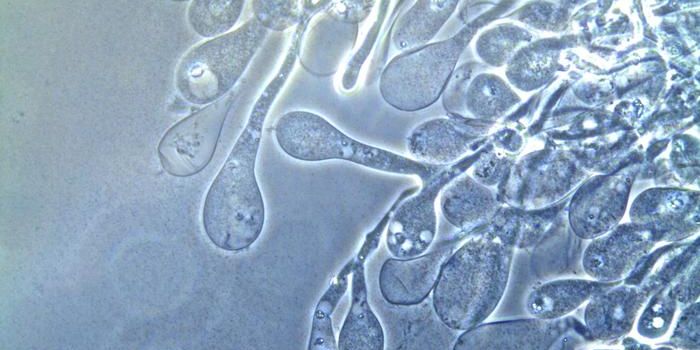NASA Webb Identifies Carbon Compound in Young Star System
The NASA James Webb Space Telescope (JWST) recently used its powerful instruments to identify a carbon compound known as methyl cation (CH3+), also called methenium, which is responsible for producing more complex carbon-based molecules, in a young star system called d203-506 located in the Orion Nebula approximately 1,350 light-years from Earth. The findings were recently published in Nature, and this study holds the potential to help scientists better understand how life might have developed both on Earth and elsewhere in the cosmos.
Image from NASA's James Webb Space Telescope displaying a portion of the Orion Nebula called the Orion Bar. The largest image (left) was obtained from Webb’s NIRCam (Near-Infrared Camera) instrument. The zoomed-in, upper right image is a smaller area using Webb’s MIRI (Mid-Infrared Instrument) featuring a young star system with a protoplanetary disk called d203-506. The zoomed-in, lower right image is a combined NIRCam and MIRI image of this young system. (Credit: ESA/Webb, NASA, CSA, M. Zamani (ESA/Webb), and the PDRs4All ERS Team)
“This detection not only validates the incredible sensitivity of Webb but also confirms the postulated central importance of CH3+ in interstellar chemistry,” said Marie-Aline Martin-Drumel, who is a researcher at the Centre National de la Recherche Scientifique (CNRS) and a co-author on the study.
The young star system, d203-506, is what’s known as a protoplanetary disk, meaning its system has a newly formed star surrounded by a large disk of gas and dust but planets have yet to form. Since carbon compounds are responsible for creating all forms of life, this discovery could present clues to how life might evolve in this system over the long-term.
The young system is currently being blasted by ultraviolet (UV) light emanating from hot, young, massive stars close by which scientists hypothesize is standard for young systems as they tend to develop in close proximity to other stars. While such UV radiation typically destroys any prospects for life, the researchers believe this cold actually promote life by providing the required energy to form CH3+, which leads to developing more complex carbon molecules for larger forms of life to potentially take hold.
“This clearly shows that ultraviolet radiation can completely change the chemistry of a protoplanetary disk. It might actually play a critical role in the early chemical stages of the origins of life,” said Dr. Olivier Berné of the French National Centre for Scientific Research in Toulouse, and lead author of the study.
Like all key scientific findings, further observations are required to confirm these most recent findings, but the Orion Nebula is known as a “stellar nursery” where new stars are forming and has long been studied to examine the formation and evolution of young star systems to gain better insights into how our own solar system might have formed in its infancy.
What new discoveries will scientists make about young star systems and their prospects for developing life beyond Earth? Only time will tell, and this is why we science!
Sources: Wikipedia, Nature, NASA, ScienceDirect, NASA (1)
As always, keep doing science & keep looking up!









